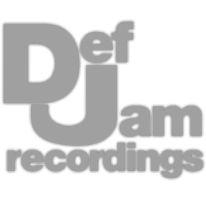Professional Analog Mastering.
Professional Analog Mastering.










When you're trying to make your vocals sound crisp, one good technique is to use a high shelf eq and boost the highs - then follow it with a de-esser to control any extra sibilance. You can also use parallel compression on the highs and blend it back in.
If we use a high shelf filter on the vocals and then use a de-esser, we get a really aggressive but controlled high end - the shelf boosts the high frequencies and the de-esser compresses sibilance. Since the high end is boosted first, the de-esser works harder.
Overworking the de-esser creates a distinct and crisp sound that works well for some vocals.
Exciters cause harmonic distortion to the high frequencies making your vocals sound crisp - if we add low-level or upward compression after this we can make the effect even more aggressive. Fresh air by Slate and the Oxford Inflator make for a great combo and add a lot of clarity.
I like to boost both the mid-air and air bands on Fresh Air, then use a negative curve of the inflator to emphasize the high end.
Although this method won't cause crisp vocals, when combined with some other techniques it can help a lot - in short, when compressing the vocal I’ll use an internal side chain to exclude the highs from triggering the compression. The highs will still be compressed, but compression occurs less regularly.
This helps if your vocal recording is crisp and you don’t want your compressor to attenuate the signal due to these high frequencies.
Somewhat like our first technique, we can drive or emphasize high frequencies into a saturator, where they’re compressed and distorted, and then de-emphasize these highs with another EQ. To create crisp vocals, use a higher shelf, moderate saturation, then for your de-emphasis attenuate less than you originally amplified.
This causes the saturators to work harder on high frequencies, resulting in a crisp sound and then balances out the spectrum so the effect isn’t too aggressive.
The reverb you choose has a big impact on the timbre of your vocal - for crisp vocals, I’ll use a high-density vocal plate, and emphasize the high frequencies while cutting the lows. Most reverb plugins will have a section when you can control the reverb’s frequency response.
If the one you like doesn’t have this then use the reverb as a parallel send and add an EQ after the reverb.
This is probably the most common way to make crisp vocals - first create an aux send or bus, and on the parallel track first, insert an EQ. With this EQ, use a high-pass filter to attenuate up to about 6kHz, and follow this insert with an aggressively used compressor.
Now you have a hyper-compressed high end, which you can blend back in with the original until you get the right balance.
If you have a crisp vocal but you still need to compress, it’s best to use a medium attack and short release. This will cause the signal to be compressed a little later, letting transients and detail pass unaffected - as well as returning the signal to unity quicker.
With these settings, you get more transparent compression that doesn’t affect the detail of the vocal while still controlling dynamics.
Another way to add some high end to your vocal is to reduce phase cancellation or masking of the vocal’s higher frequencies. Cut some of the lower frequencies with a high-pass filter and dip an area in the mids that seems to be too powerful.
This causes some of the quieter parts of the high frequencies to cut through - combine this curve with other effects for the best results.
One technical thing we haven’t touched on yet is the importance of oversampling when creating crisp vocals - if you distort, excite, boost, or saturate the vocal’s highest frequencies, you’ll need to use oversampling to avoid aliasing distortion. In short, oversampling gives the high frequencies a higher range to occupy.
If higher frequencies can’t be represented they’ll become reflected down the frequency spectrum, causing phase cancellation to your vocals high end, in turn hindering the crispness of your vocal.